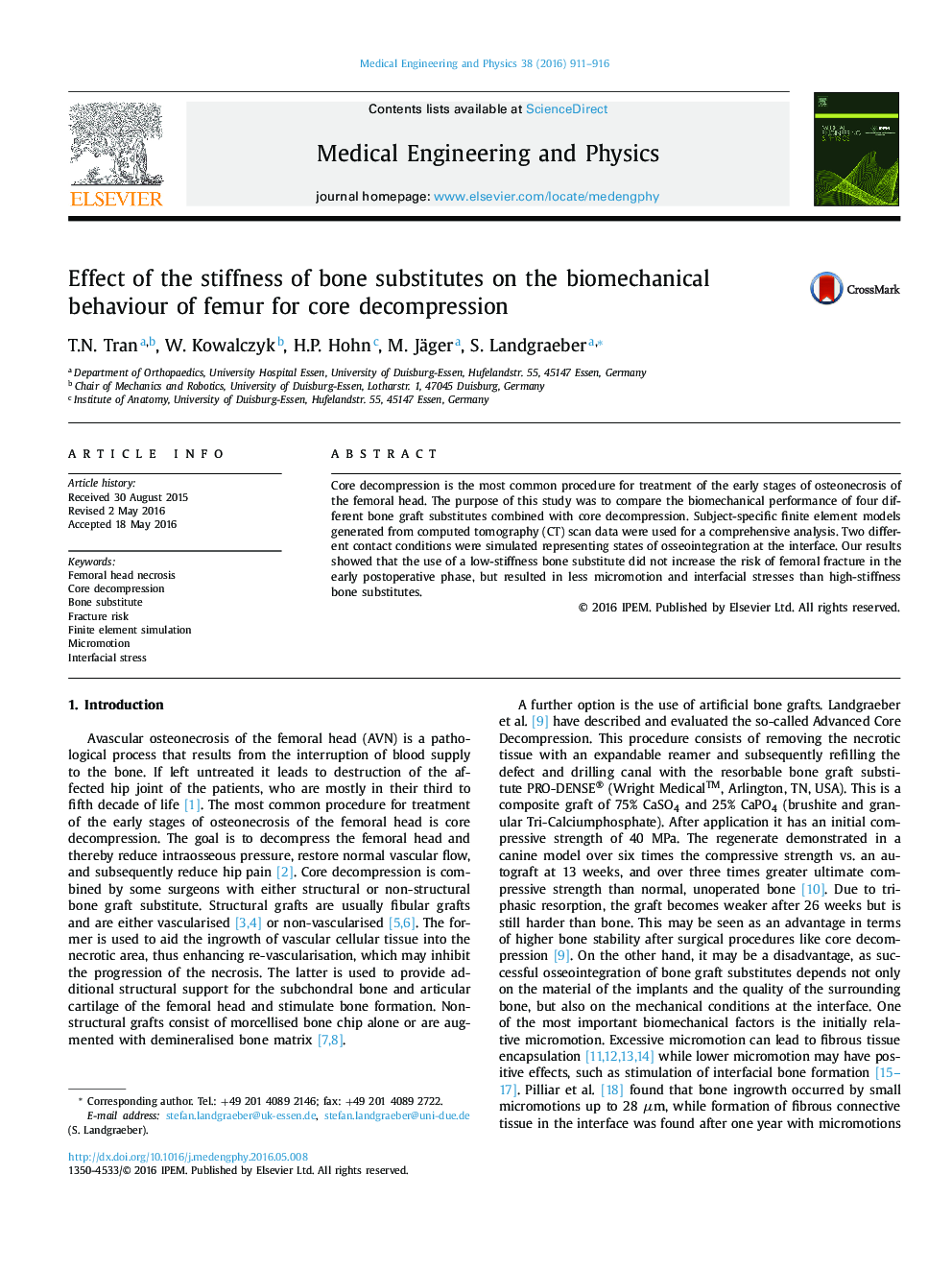| Article ID | Journal | Published Year | Pages | File Type |
|---|---|---|---|---|
| 875593 | Medical Engineering & Physics | 2016 | 6 Pages |
•Core decompression is the most common procedure for treatment of early stages of avascular osteonecrosis of the femoral head (AVN).•The purpose of this study is to compare the biomechanical performance of four different bone graft substitutes combined with core decompression.•Two different contact conditions were simulated representing osseointegration states at the interface.•The study was motivated by frequent questions relating to the treatment of AVN.•Our results showed that the use of a low stiffness bone substitute did not increase the femoral fracture risk in the early postoperative state, but resulted in less micromotion and interfacial stresses than a high stiffness one.•We would be happy if you could consider our paper for publication.
Core decompression is the most common procedure for treatment of the early stages of osteonecrosis of the femoral head. The purpose of this study was to compare the biomechanical performance of four different bone graft substitutes combined with core decompression. Subject-specific finite element models generated from computed tomography (CT) scan data were used for a comprehensive analysis. Two different contact conditions were simulated representing states of osseointegration at the interface. Our results showed that the use of a low-stiffness bone substitute did not increase the risk of femoral fracture in the early postoperative phase, but resulted in less micromotion and interfacial stresses than high-stiffness bone substitutes.
